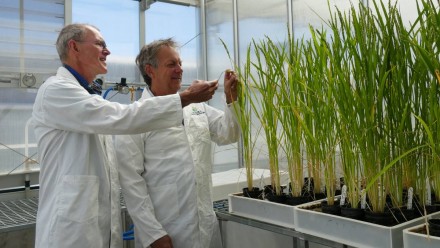ANU researchers look to lift crop production through photosynthesis research
With food security trending across social media sites, its important to take note of the blue-sky research being carried out in Australia to future-proof our food.
While panic buying and poor logistics have caused the majority of food shortages on Australian supermarket shelves, long-term climate trends and the commercial realities of needing to 'grow more with less' have been driving researchers toward altering the way plants grow at a fundamental level.
Despite the long-winded name, the Australian National University's Australian Research Council Centre of Excellence for Transitional Photosynthesis has a rather straightforward mission, research the ways photosynthesis can be altered to increase yield in food crops.
Centre director and ANU Professor Robert Furbank said photosynthesis, the process green plants use to convert sunlight into chemical energy, could give farmers the tools to increase crop production while battling with changes to the climate.
"Australian plant scientists are punching above their weight by participating in global, interdisciplinary efforts to find ways to increase crop production," he said.
"We essentially need to double the production of major cereals before 2050 to secure food availability for the rapidly growing world population."
Initial outcomes from the research were recently published in the Journal of Experimental Botany, co-editor and ANU researcher Professor John Evans said the publications showed how improving photosynthesis could benefit food production.











